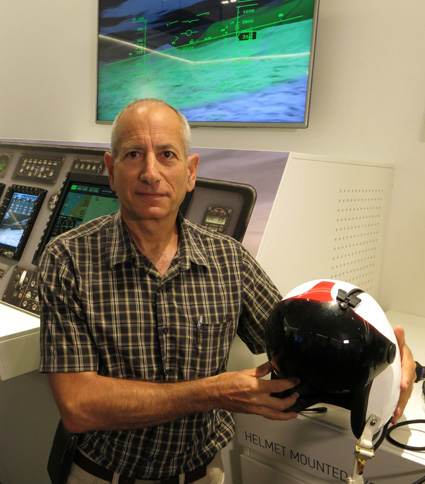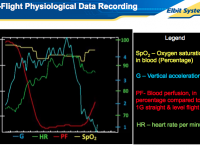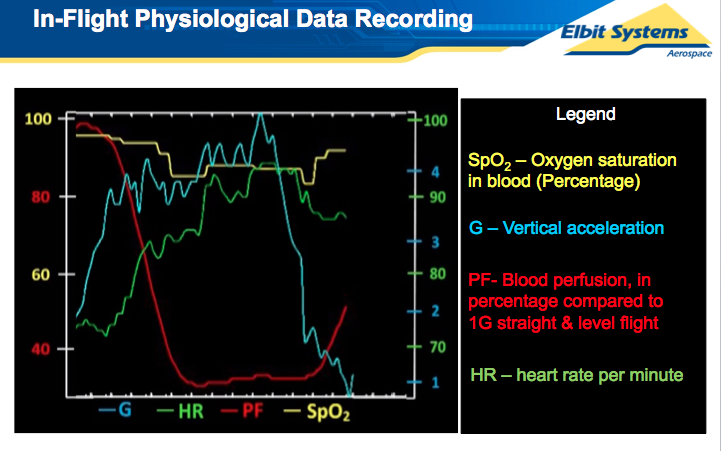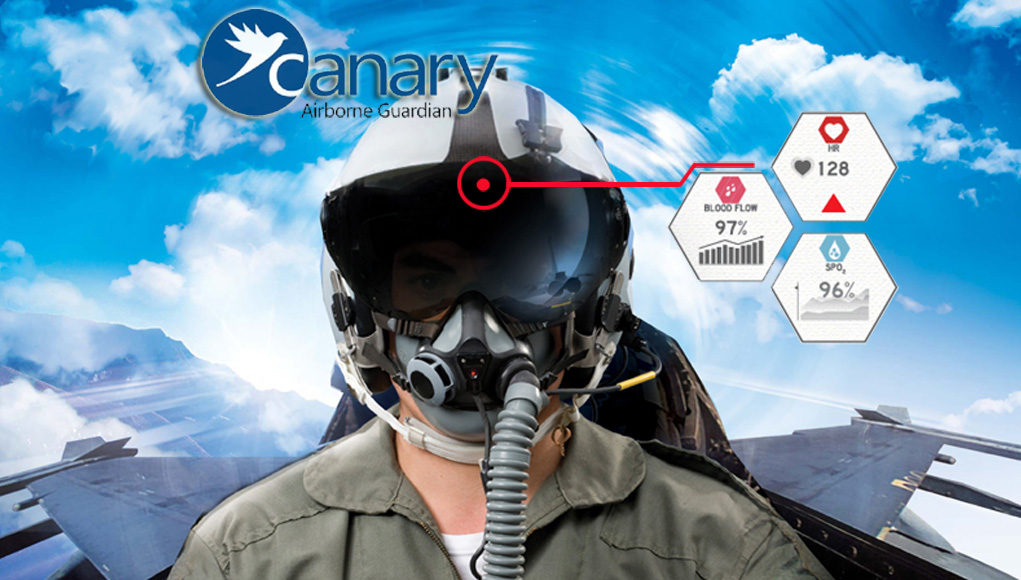
“These two conditions are life threatening, since they often cannot be sensed by the pilot,” sais Yaron Kranz, Business Development and R&D Director at Elbit Systems. Photo: Noam Eshel, Defense-Update
Elbit Systems is developing new applications for smart helmets for pilots that will be able to sense life-threatening developments during flight. The helmet is fitted with unique bio-sensors that measure physiological life signs. Monitoring the pilot’s heartbeat, blood flow and oxygen level in the blood stream. The system can identify developing conditions that could lead to hypoxia or G-induced loss of consciousness (GLOC).
“These two conditions are life threatening, since they often cannot be sensed by the pilot,” Yaron Kranz, Business Development and R&D Director at Elbit Systems told Defense-Update. Hypoxia can develop at different pace, with oxygen concentration in the blood falling and no clear signs that would signal the pilot to take preventive measures. Measuring consciousness is even harder, as GLOC may happen suddenly and comes without warning.
“The best way to monitor oxygen level is to measure oxygen saturation in the blood, similar to the measurement done on patients. But, to do that, you need a different sensor,” Kranz explained. For this application Elbit Systems adapted a commercial sensor developed by LifeBeam, an Israeli start-up company that developed such a sensor to monitor peak performance for extreme sports’ athletes such as marathon runners, bicyclists and mountain climbers. The sensor measures oxygen concentration in the blood, heartbeat and blood perfusion (the volume of blood that flows through to the tissues).
“We are working with AFRL to study such applications. We will soon start the second phase and expect to complete development in less than a year,” Kranz added. “We embedded the sensor in our new-generation helmets that have integral processing capability on the helmet.” Helmets with integrated sensors were tested in a centrifuge under high G loads with pilots wearing G-suits. On other tests pilots flew with them under loads of up to 6G. “The test results we have collected so far have shown that the sensors performed predictably and reliably, monitoring the pilot’s condition, collecting data in flight, and providing sound physiological data that will be able to support further decisions and advanced applications in the future,” Kranz noted.
[nonmember]

[/nonmember]We discovered that hypoxia can develop in different conditions. In non-pressurized cockpits, for example, when flying helicopters over high mountain ranges, hypoxia can develop slowly over the course of an hour. When caused by oxygen supply failures or human condition, blood oxygen levels can drop, from 90 to 60-70 percent. GLOC also occurs abruptly when pilots are subjected to excessive loads without the recommended preparation.
Usually a pilot would recover from GLOC in 20 seconds, but, during the condition, the aircraft is uncontrolled and could hit the ground. A warning issued just prior to the onset of GLOC could alert the pilot to take precautions, breath properly, apply pressure to reduce the load or ease the sharpness of the turn to reduce G. The sensor can profile each individual pilot and assess his or her performance and tolerance on the specific flight.
Once the system ‘decides’ that the pilot is in danger, it triggers an audio-visual warning alerting the pilot to take action. In case the system ‘senses’ that the pilot is unconscious, the autopilot can be activated to take control.
[ismember]

Having such sensors and smart helmets provides the necessary capability to assess the pilot’s condition and consciousness. The head of an unconscious pilot would ‘drift’ toward the direction of flight and not move around, look into a turn and watch the instruments or HUD, as a conscious pilot would. Therefore, when the helmet ‘senses’ that the pilot is not behaving normally, along with other relevant, physiological signs, it could be a good indication that the pilot is not in control.
Elbit Systems plans to introduce the new capability with its D-JHMCS, JHMCS II and Targo, as well as a stand-alone application for helicopters and transport planes. This capability will also find its application in commercial and civil aviation, monitoring the pilot’s condition and control, to counter such dangers as hypoxia and other pilot-induced conditions which have taken their tolls in the past.[/ismember]




















